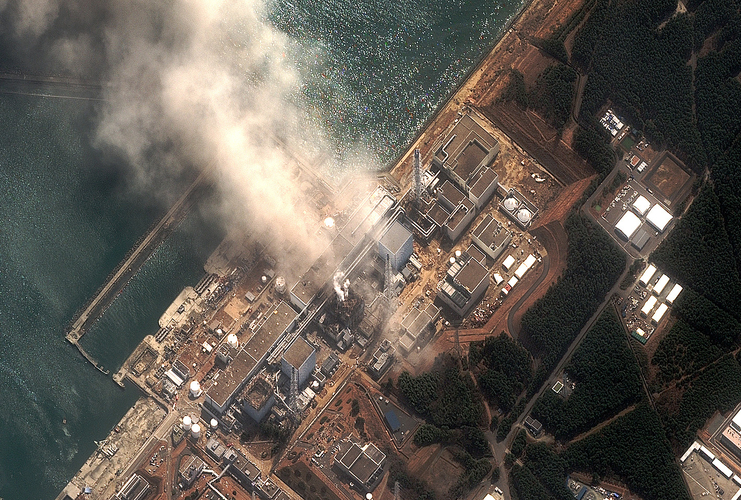GUILFORD — On March 11, 12 years will have passed since the nuclear disaster at the Fukushima Daiichi reactor complex - a meltdown that happened as the result of a massive tsunami.
The natural disaster should not have been surprising due to Japan's location within what geologists call the “Ring of Fire,” a powerful designation of the area around the Pacific Ocean where seismic activity is endemic - which makes the Pacific shoreline of Japan a very poor spot to build numerous nuclear reactors.
And yet, after closing all reactors in response to Fukushima, the Japanese government has reopened some shuttered nukes and plans to open still more - in spite of all the seismic risks, in spite of the huge radiation exposure from the initial Fukushima meltdown, and in spite of the terrible nuclear toll from the U.S. bombing at Hiroshima and Nagasaki.
If Japan wants to stop using gas and oil from Russia, the country could use renewable power sources, which are getting more affordable, more reliable, and more vital to the health of the flora and fauna on Earth every day. In fact, Japan has a huge, untouched capacity for offshore wind.
* * *
In the initial meltdown caused by lack of coolant and electricity during the tsunami in 2011, reactor cores - the part of the nuke that houses the power production - released large plumes of radioactivity into the air. The area was evacuated, and some citizens have never returned home.
The only way to prevent a release of toxic elements from the destroyed reactor cores is a constant coolant bath of water. Once dumped onto the cores, that water becomes highly radioactive and then must be isolated from the world. This has resulted in the huge water problem that exists today.
Radioactive water is the main waste issue right now - as in, there is so much of it in (by one account) more than 1,000 tanks covering every square inch of the reactor site and rapidly nearing capacity.
The water is partially filtered by an Advanced Liquid Processing System (ALPS), designed to remove the most toxic elements, including strontium, cesium, and plutonium.
These most-toxic products of nuclear reaction are accumulating on the Fukushima Daiichi site in the form of a truly horrific sludge - a problem for which nobody is suggesting a permanent solution.
In addition, the ALPS system was not designed to remove heavy water, known as tritium, and it also leaves small amounts of radionuclides in the water.
Tritium is a radioactive form of hydrogen with two extra neutrons. Its dangers are very much in dispute. The nuclear industry and the Japanese government want to project a completely safe image of this radioactive element that is almost never found in nature. However, there are scientists who have linked high exposure to tritium to cancer risks.
TEPCO, the company that owns the reactors, and the Japanese government are trying to convince the world that tritium-laced water is just fine, that millions and millions of gallons of tritiated water being dumped into the Pacific Ocean would be no problem.
* * *
The victims of the United States open-air nuclear testing - the islands in the Pacific such as the Marshall Islands from 1946 to 1958 - are not pleased about the tritium-laced water that will be contaminating their fishing grounds if this huge, multi-year release is allowed to happen.
The radioactive load from the testing is still so great that some of these islands have never been reinhabited. Korea and China have expressed concern. Japanese fishers from the area around Fukushima have pleaded with the government to store this stuff and not dump it into the Pacific, but Japan seems determined to dispose of this contaminated water. Its government exclusively uses the word “treated,” not “radioactive,” for the water.
* * *
At a time when the United States is again throwing huge sums of money at the nuclear industry - to the tune of $6 billion to rehabilitate old reactors, many of which are the same model as those that failed so badly in Japan - we need to remember the timeline for decommissioning Fukushima.
Stopping the nuclear chain reaction in the damaged reactor cores will still take 30 to 40 years - no less time now than was predicted the year after the meltdowns. This sounds an awful lot like “we don't know what the hell we can do to stop this.”
The nuclear industry has positioned itself as an answer to climate change. And it is true that it is not coal. Those who prefer corporate control of our energy system will continue to promote nukes, instead of the small-scale wind, solar, and other alternatives that we can install and use to generate our home power.
When we are in a time of political instability, when threats to reactors are very real - as we have witnessed in Ukraine - it is time to decommission and isolate the reactors and the poisons that have already been created.
If there is a system collapse, who will maintain the nuclear reactors around the world?
Please, anyone who believes that nuclear is the answer to climate destruction - think of Fukushima.
